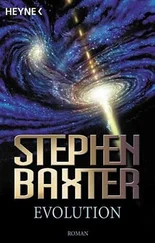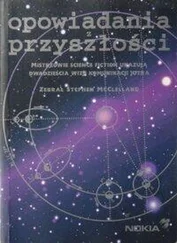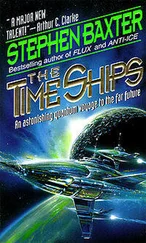Venture Star ’s principle system of navigation is in fact the very oldest: by the stars. Many unmanned spacecraft have carried star sensors for just this reason; out in space, surrounded by a shell of brilliant stars, it’s easy to pick out target stars by their characteristic light, and so to fix your position in three dimensions.
Before any star mission becomes practical, a vast exercise will be needed in nailing down interstellar distances, star positions and velocities precisely. Work has already begun on such a catalogue of stars, with the first space probes dedicated to “astrometry.” ESA’s Hipparcos space mission (High Precision Parallax Collecting Satellite), which ran from 1989 to 1993, produced a high-precision mapping of a hundred thousand stars. The upcoming Gaia, ESA’s successor to Hipparcos to be launched in 2012, is set to catalogue a billion stars.
For Venture Star it won’t be sufficient to treat the stars as fixed markers, as navigators can on Earth. From the ship, moving among those very stars, the crew will see the stars themselves shift across the sky—though not by much; the distance to Alpha Centauri, four light years, is still relatively short compared to the distances to the furthest visible stars. The stars of the Orion constellation, for example, are scattered through a volume of space a thousand light years deep, and the nearest of them is no closer than five hundred light years from the sun. Perhaps the interstellar navigators will actually measure the shifting of nearby stars against the background to fix their position (this is effectively how Thomas Henderson calculated the distance to Alpha Centauri in the first place (see Chapter 12)).
And, as you might expect, as Venture Star is travelling at a respectable fraction of the speed of light, there will be relativistic effects to take account of.
There will certainly be a “Doppler effect,” the same phenomenon that causes the pitch of a speeding police car’s siren to rise as it approaches you and drop when it drives away; the sound waves are bunched up one way, then stretched out the other. The maths for light at relativistic speed is different from the acoustic case, but the principle is the same. On a starship the Doppler effect will cause the light of the stars you are heading towards to be shifted towards the blue end of the spectrum (the shortest wavelengths), and those you are leaving behind shifted towards the red (the longest wavelengths), phenomena known as blue shift and red shift. If you go fast enough the “visible” stars might become invisible altogether because of this effect, with sullen red stars ahead of you, usually not seen at all, blue-shifted to visibility.
And then there’s an effect called “stellar aberration.” Aboard Venture Star you’re hurtling through a storm of starlight, as if you were running through raindrops. Just as if it would feel as if the rain was beating into your face even if it was falling vertically, so the apparent angle of the starlight is adjusted by your motion. At seventy per cent lightspeed, a star that was along a line of sight at forty-five degrees to your direction of motion would apparently be shifted down to about twenty degrees. Essentially the stars ahead of you would all seem to be bunched together in your field of view.
From the point of view of interstellar navigation, all these effects can be accounted for. But imagine a starscape at interstellar speeds! You would see all the stars in the sky scrunched up into a disc ahead of you, and these are not the familiar stars of our constellations but the much vaster population of cooler stars blue-shifted to brilliance, tens of thousands of stars usually invisible to the human eye. Behind you is only darkness, a part-sphere from which all the light has been deflected by aberration, all save for a point directly to the rear…
I hope Venture Star has an observation dome; it would be quite a view—but one which you might get sick of after the first five years of the flight.
Must it take so long to reach the stars?
If we’re limited by lightspeed, then it will always take a significant chunk of a (non-frozen) crew member’s life even to reach the nearest stars, and much of the Galaxy might forever be beyond us. If we’re limited by lightspeed. But are we? Will a warp drive, like the Enterprise of Star Trek , ever be possible?
The way to break Einstein’s speed-of-light law is to look at the small print. You can’t travel faster than light going through space-time… so what you must do is to go around space-time… or take it with you.
The idea of the space-time wormhole, a short cut through space, has become familiar to us through science fiction shows such as Star Trek: Deep Space Nine. Einstein himself (in his general theory of relativity) taught us that space-time is malleable, shaped by the mass and energy it contains. The idea of a wormhole is to bend space-time so severely that two points which are far apart are drawn together, through a higher dimension, and connected by a wormhole, a short tunnel. It would then be possible to cover immense distances without violating light-speed, by popping through the wormhole short-cut. Surprisingly the idea has a (reasonably!) firm theoretical footing. The astronomer Carl Sagan, wanting to use the idea for his science fiction novel Contact , asked physicist Kip Thorne to put some theoretical flesh on the notion. (Starship dreams are definitely an area where science fiction and science overlap.) Thorne found, to his surprise, that the concept made sense.
Another intriguing possibility is space-time surfing. In 1994 a physicist called Miguel Alcubierre, working at the University of Wales, showed that it may be possible to create waves of space-time. Because these waves are made of space-time they do not travel through space-time, and so aren’t subject to the light-speed law. A spacecraft could “surf” such a wave, and be carried at arbitrarily high speeds. Alcubierre’s surfing would have the advantage that you could go anywhere you liked; wormholes, by comparison, connect two fixed points. Alcubierre himself said in his paper that this is as close to the classic “warp drive” of science fiction that we are likely to come up with—and since that paper a generation of workers have toiled to find ways to make this practical. (Incidentally, because a faster-than-light starship breaks out of lightspeed’s causality cage, all that stuff in Chapter 9 about clocks and simultaneity becomes a lot more complicated. Such a starship can even become a time machine.)
If we ever do build a warp engine it will probably be long after Avatar ’s twenty-second century—but there is one small chink of light.
According to Albert Einstein, nothing, not even information, can travel faster than light. But RDA do have a “superluminal” (faster than light) communication channel, which works by “McKinney quantum entanglement encoding.” Not very well, however; the bit rate is very low.
Quantum theory is all about information, specifically the information needed to specify the state of a particle like an electron: its charge, its spin, its velocity and so on. Suppose you have two electrons coming out of some process so that they share a property—spin, say, or momentum. They are said to be “entangled,” the information sets that describe them forever linked. The entanglement still holds true no matter how far they are separated—even if one electron stays on Earth and the other is carried to Pandora. If you now make a measurement of the entangled property of the particle on Earth, the state of its twin is immediately affected, instantaneously , regardless of light-speed. Einstein himself didn’t like this, he was no great fan of quantum mechanics as a whole although he contributed greatly to its development, and he called it “spooky action at a distance.” He was probably comforted by the apparent fact that you couldn’t send any useful information by this channel.
Читать дальше










